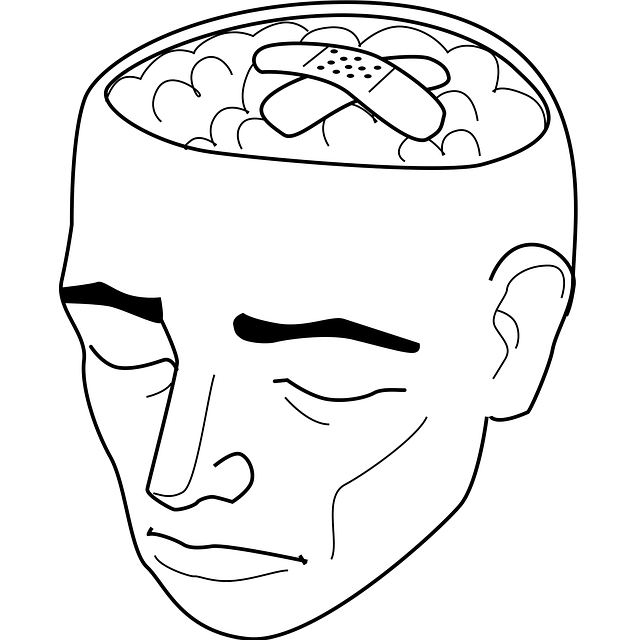Public awareness campaigns, such as those offered by Arvada Adolescent and Teen Therapy (AATT), effectively transform societal perceptions and behaviors by educating communities about critical issues. AATT's tailored interventions for mental health and well-being, including therapy, counseling, and workshops, have led to positive outcomes among adolescents. To create impactful mental health campaigns, organizations should design engaging education programs through diverse channels, advocate for policy improvements, and integrate risk management planning. Evaluating these initiatives using robust data collection methods tracks immediate and long-term impacts, validating successful programs and guiding future enhancements, like those provided by AATT.
Public awareness campaigns play a pivotal role in shaping societal behaviors and health outcomes. This article explores their profound impact, using Arvada Adolescent and Teen Therapy (AATT) as a compelling case study. We delve into the targeted strategies AATT employs to reach at-risk youth, highlighting key components for effective campaign development. Furthermore, we discuss evaluation methods to measure success, emphasizing the importance of data-driven approaches in public health initiatives.
- Understanding Public Awareness Campaigns: Their Role and Impact in Society
- Arvada Adolescent and Teen Therapy: A Case Study for Targeted Campaigns
- Key Components of Effective Public Awareness Campaign Development
- Measuring Success: Evaluation Strategies for Public Health Initiatives
Understanding Public Awareness Campaigns: Their Role and Impact in Society

Public awareness campaigns play a pivotal role in shaping societal attitudes and behaviors. These initiatives are designed to educate and engage the public on various issues, fostering a deeper understanding and encouraging positive change. By leveraging communication strategies, they can reach vast audiences, dispel misconceptions, and empower individuals to take action. For instance, organizations like Arvada Adolescent and Teen Therapy leverage awareness campaigns to address mental health challenges among youth, promoting essential practices such as burnout prevention and confidence-boosting strategies.
These campaigns are not just informational; they have a tangible impact on individual well-being and community resilience. They encourage the development of healthy self-care routines, emphasizing their crucial role in maintaining better mental health. Through creative messaging and targeted outreach, awareness initiatives can inspire lasting behavioral shifts, ultimately contributing to a more informed and supportive societal environment.
Arvada Adolescent and Teen Therapy: A Case Study for Targeted Campaigns

Arvada Adolescent and Teen Therapy (AATT) serves as a compelling case study for developing targeted public awareness campaigns. This organization has successfully addressed the unique challenges faced by adolescents and teens in their community, demonstrating the power of tailored interventions. By focusing on mental health and well-being, AATT offers a range of services, including individual therapy, group counseling, and evidence-based programs designed to empower young individuals.
Their approach involves not only addressing specific issues like anxiety, depression, and conflict resolution but also teaching essential skills for stress management workshops and compassion cultivation practices. This comprehensive strategy has fostered positive outcomes, leading to increased resilience and improved coping mechanisms among the target demographic. The success of AATT highlights the significance of understanding the target audience’s needs and cultural nuances when designing public awareness campaigns.
Key Components of Effective Public Awareness Campaign Development

An effective public awareness campaign about mental health issues, like those offered by Arvada Adolescent and Teen Therapy, relies on several key components. First, a Mental Health Education Programs Design that is engaging, accessible, and tailored to diverse audiences is essential. This involves creating compelling content through various channels such as social media, workshops, and community events, ensuring information is presented in an understandable and relatable manner.
Additionally, Mental Health Policy Analysis and Advocacy plays a crucial role. Campaign developers must understand the broader societal context and advocate for policies that support mental well-being. This includes raising awareness about existing resources and programs while also pushing for improvements in areas like Risk Management Planning for Mental Health Professionals. By addressing these aspects holistically, campaigns can foster meaningful change and improve access to mental health services.
Measuring Success: Evaluation Strategies for Public Health Initiatives

Evaluating the success of public health initiatives, such as those focused on adolescent and teen therapy in Arvada, is a multifaceted process. It involves assessing both immediate outcomes and long-term impacts to ensure that efforts are effective and aligned with community needs. One key strategy is to employ robust data collection methods, including surveys, interviews, and observational studies, to gather firsthand accounts from participants and stakeholders alike. By analyzing changes in attitudes, behaviors, and health indicators over time, researchers can measure the reach and effectiveness of these initiatives.
For instance, programs like those offered by Arvada Adolescent and Teen Therapy might focus on coping skills development and self-care routine establishment for better mental health. Evaluation strategies could track improvements in participants’ emotional resilience, stress management, and overall well-being. Incorporating Compassion Cultivation Practices (CCP) into these campaigns has shown promise in enhancing social connections and fostering a sense of community, which can be quantitated through network analysis and participant feedback. Such evaluations not only validate successful programs but also inform future initiatives, ensuring continuous improvement in public health services.
Public awareness campaigns, as demonstrated by Arvada Adolescent and Teen Therapy initiatives, play a pivotal role in shaping societal attitudes and behaviors. By understanding their key components and utilizing effective evaluation strategies, health professionals can design impactful campaigns that drive positive change. Leveraging targeted approaches, like those seen in the case study, ensures resources are channeled into areas of greatest need, ultimately enhancing public health outcomes.














